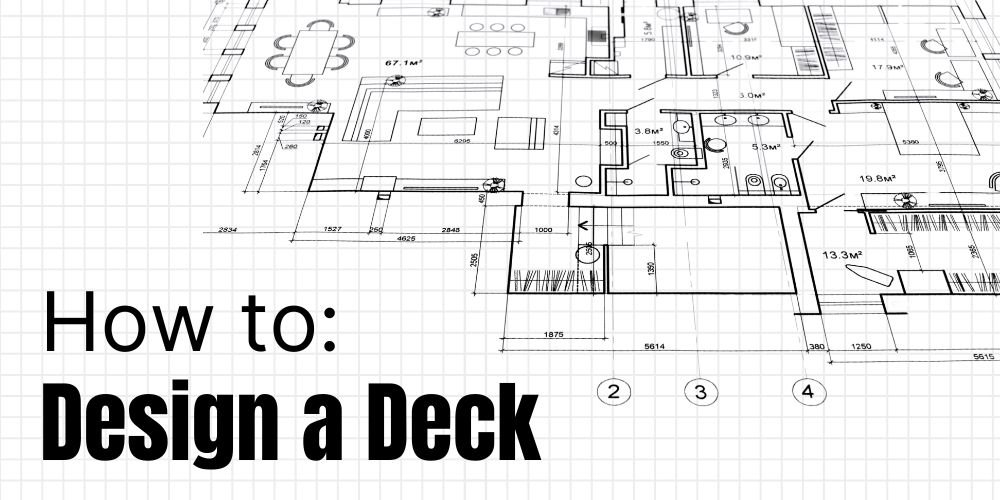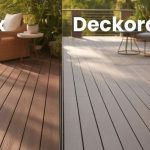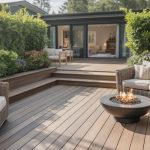A high-quality deck design turns outdoor areas into practical and attractive relaxation zones. Construction planning determines how much space your outdoor area will become through deck development. Designing a deck requires equal attention to its visual appeal, practical features, and structural needs.
The following guide presents the fundamental process for creating a deck that will enhance the appearance of your residence and enrich your daily quality of life.
1. Understand Your Space and Purpose
Design initiatives should wait until you check your existing space measurements and identify the intended functions of your deck. Consider the following:
- How will you use your deck? The deck will function as a place for dining, entertaining, relaxing, and other activities.
- What size works best? Utilize your available space to measure the area and devise various design plans.
- What’s your budget? Plan for all expenses, from materials to labor costs and supplemental aspects.
- The current regulations for construction work should be evaluated. All building operations must comply with local permits, safety standards, and relevant laws.
The factors you understand will help you build a deck that satisfies your requirements while enhancing your home exterior.
2. Choose the Right Deck Shape and Size
Your deck’s design must improve the appearance of your residence through harmonization between the house exterior and outdoor surroundings. Some popular deck shapes include:
- Crafting a rectangular deck layout remains the simplest building option because it provides maximum floor space usage.
- L-shaped decks create excellent outdoor spaces that extend from homes to establish several usable areas.
- The combination of multiple tiers on decks proves beneficial for uneven ground, creating visual appeal and functional features.
- The curved deck design is a modern addition that enhances architectural character.
Consider balancing the deck’s dimensions with your house size. An oversized deck will overpower a minimal yard, whereas a too-small deck might not accommodate necessary seating areas and walking paths.
3. Consider Traffic Flow and Accessibility
An effectively designed outdoor deck must provide unhindered movement patterns for all users. Keep these factors in mind:
- The placement of doors and stairs must consider simple access points between your house and outside.
- Winding pathways should have sufficient area to support safe navigation, especially when furniture or a dining segment is present.
- The position of furniture should be considered to prevent room congestion.
A proper floor layout for your deck ensures comfortable outdoor social activities.
4. Select Durable and Stylish Materials
The materials you select for your deck determine its lifespan and cosmetic appeal. Some common options include:
- The wood materials for decks consist of Pressure-Treated wood, cedar Redwood, and Ipe. All these options deliver natural aesthetics but need regular upkeep.
- Composite decking is low-maintenance, durable, and available in various colors and textures.
- PVC decking is fully synthetic, resistant to moisture, and extremely low maintenance.
- Aluminum decking is strong and weather-resistant but more expensive.
Your decision should weigh durability, cost aspects, maintenance requirements, and aesthetic needs of possible materials.
5. Integrate Landscaping for a Cohesive Look
Your outdoor environment demands a deck that converges naturally with its surroundings. Your design process for integrating the landscape elements includes the following steps:
- Greenery integration involves using patio plants through built-in planters, potted flowers, and garden beds.
- Combining natural stone with gravel helps establish pathways or function as contrasting elements against wooden decking surfaces.
- You should invest in pergolas or trellises because they provide shade and style and opportunities for vertical plant growth.
- Installing deck lighting, such as lights and solar fixtures, will increase safety and create a pleasant mood.
Proper landscaping techniques transform your deck into an approaching natural space, creating a welcoming environment.
6. Plan for Built-In Features
Custom-made deck features will both improve looks and boost utility value. Some ideas include:
- Benches and lounge areas designed into decks save space while removing traditional furniture.
- The outdoor kitchen or bar provides the ideal spot for entertaining people.
- Users can enjoy pleasant outdoor relaxation using outdoor fire pits or fireplaces during all seasons through their year-round coziness and charming ambiance.
- The installation of secret storage compartments provides a neat and uncluttered deck area.
Incorporating these components in your design development stage results in an effective final layout design.
7. Ensure Structural Integrity and Safety
The top priority during the design of a deck should be safety. Follow these best practices:
- Sun and water exposure are shielded by selecting fasteners made of stainless steel or coated screws that fight against corrosive effects.
- Secure railings and balusters are necessary for decks above a certain height.
- The selection of anti-slip floor surfaces minimizes accidents, particularly wet ones.
- A deck that receives proper weight distribution support will last longer with maintained safety levels.
When you employ a professional deck builder, your structure will satisfy safety requirements and obtain a perfect final result.
8. Add Personal Touches to Your Design
Your character and daily life should determine the appearance of your deck. Seven approaches exist to customize your construction according to your preferences.
- Selective use of colors should match the exterior of your house.
- Textured and patterned decking brings out visual appeal with added depth to your design.
- Warming elements such as outdoor rugs, cushions, and throws provide comfort and warmth to your environment.
- Privacy screens can be implemented using lattice panels together with curtains or vertical-growing plants for privacy.
Designing your deck to match your style will produce an environment that attracts you to stay longer.
9. Work with a Professional Deck Builder
French’s Custom Concepts’ expert professionals provide better deck outcomes than attempting this project alone through DIY construction. Their company’s specialist staff designs unique deck systems to match personal spatial requirements and financial constraints.
A professional builder can:
- Provide high-quality craftsmanship
- The project must comply with community-building regulations
- Use top-tier materials for durability
- The design should produce an elegant layout to match your house.
A professional, expert team at French’s Custom Concepts will guide you toward an attractive, structurally reliable, and enduring deck design.
Final Thoughts
The process of designing outdoor decks enables you to merge both practicality and attractive design elements. Methodically planning your design and selecting robust materials and essential features allows you to develop the best outdoor space. Expert deck construction strictly adhering to local building codes requires hiring a dependable local builder like French’s Custom Concepts. A project implementation team from their organization will transform your conceptual ideas into reality. The company will take your call to build a perfect outdoor deck.





